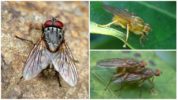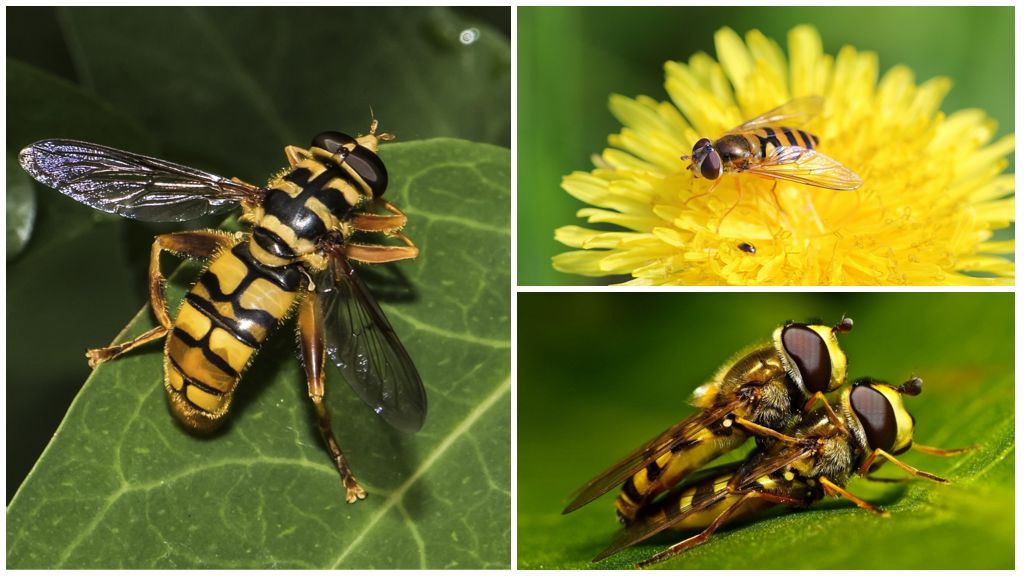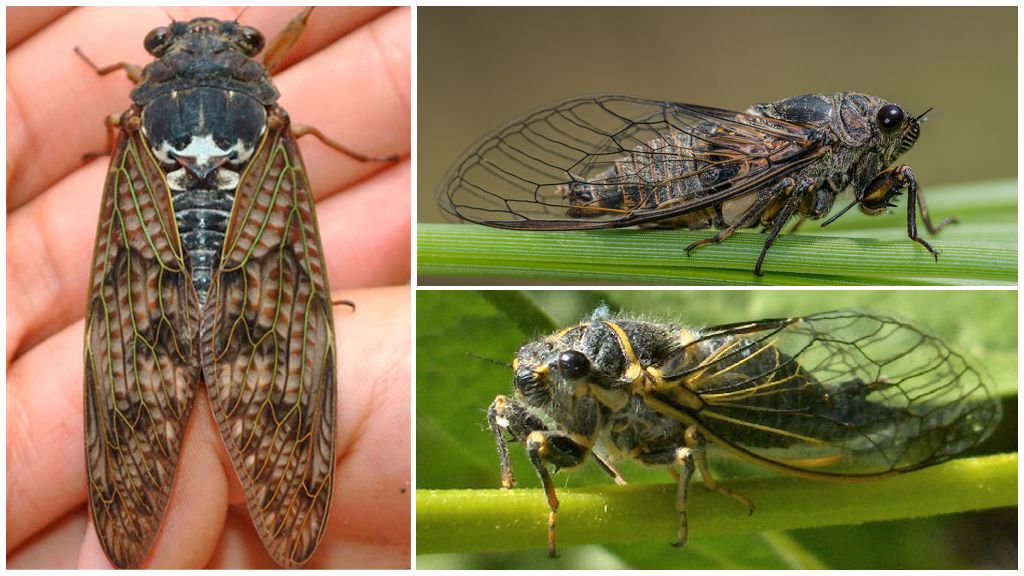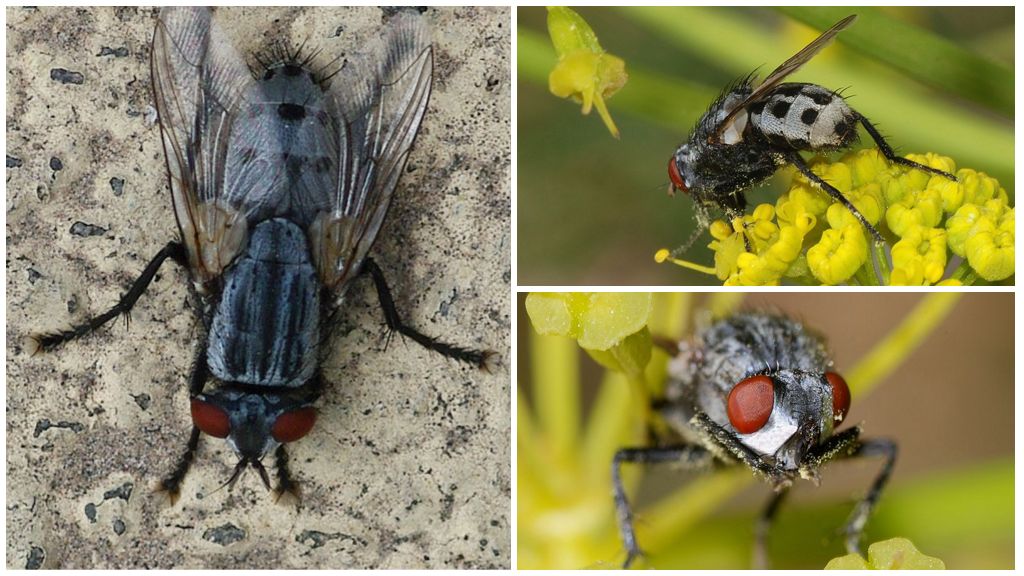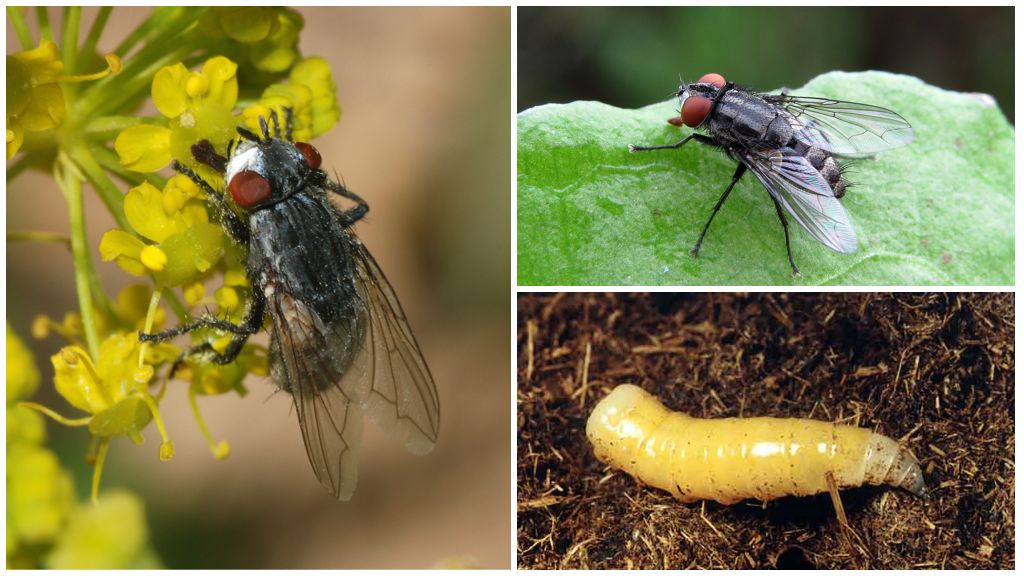- Dung fly
- Dung fly
Dung flies, dung beetles, scatophagi or scatophagids are representatives of the diptera squadron family Skatophagidae. Many people present them as shiny green insects, swarming in manure. However, they have this form green carrion flies. Dung fly looks much more attractive. This article will tell about the features of dung beetle, its nutrition and habitat.
What does it look like
Dummy - red fly size no more than 1-1.5 cm. The cylindrical shape of the body is covered with a thick gray or reddish pile, which in appearance resembles a kind of "fur". On a small head, large, widely spaced eyes with a reddish-brown tint, as well as antenna antennae, are clearly visible. At the base of the wing, only one flake is well developed. On the front legs of the insect there are long spikes, thanks to which it keeps its prey during capture (a photo of the dung fly is presented below).
Where dwells
Science knows about five hundred species of dungweed, most of which live in the Palaearctic, North America, Mexico. Together with livestock, insects entered Brazil and South Africa. Up to two dozen species of these insects live on the territory of the Russian Federation.
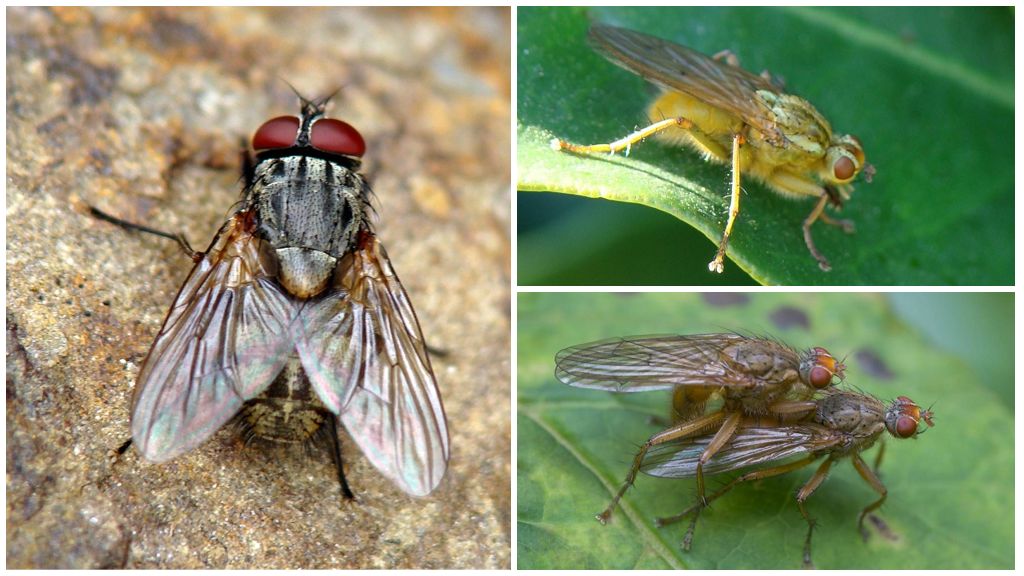
On a note!
Dung fly is a lover of moisture: it can be found in low-lying forests, mountain meadows, coastal vegetation, in marshes, peatlands and even in the southern tundra.
What eats
The dung beetle fly is a predator. Power source invertebrate organisms serve. She attacks other insects, including flies, holding her prey with her front legs and destroying it with a lightning bite of her powerful jaws. Often the dimensions of the victim exceed the size of the predator itself.
About breeding
In human housing, it is almost impossible to meet insects due to the lack of suitable food in it. But quite often "fluffy" can be found in rooms where livestock is kept. The dung beetles flock there in order to find a mate: the male expects his partner on the dunghill. Females also lay eggs in livestock manure, from which larvae appear after a day.
Dung flies give the greatest preference to dung of pigs and calves that feed on milk, since their feces, unlike equine, keep the required temperature longer. Having laid eggs, the females go to the world of flowering plants to feast on the next victim. And the appeared larvae continue to develop in a compost heap.
Most of the larvae are phytophages, however, both saprophages and predators are found. Phytophages develop in the stems of cotton grass, sorrel, sedge, they also give preference to plants of the family of lily and reed. Often, rye ears also suffer from attacks of voracious larvae.
What harm do dung flies cause to humans
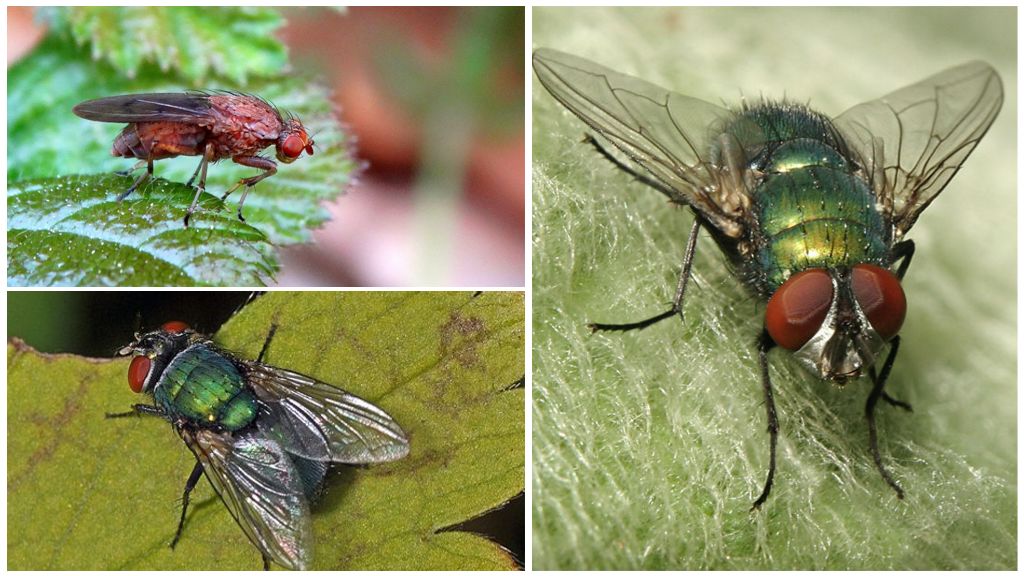
Despite the fact that dung beetles crawl over manure and can be carriers of pathogenic bacteria, they do not represent any particular harm to humans. After all, they rarely enter people’s housing, and besides bites they do not commit.
However, living in a barn containing cattle, insects are able to proliferate very quickly. As a result, the presence of dung beetles, which climb into the eyes and ears of animals, gives the latter great discomfort.For this reason, farmers try to control the number of annoying insects. in rooms for animals.
On a note!
Dung flies can be no less dangerous for garden plants, or rather egg larvae. By constructing tunnels for their movement, they cause great damage to the leaves of plants, which often causes them to wilt.
To get rid of flies, it is necessary to timely remove manure in the pens and remove the affected leaves. The ideal option is to grow plants under a mosquito net, which will protect young seedlings from the penetration of dung flies. You can control harmful insects in the barn with Velcro or traps with the bait. To prevent the penetration of scatophagi, you can also use laurel oil, which must be processed window and doorways of the house. Can also do self adhesive tapes.
